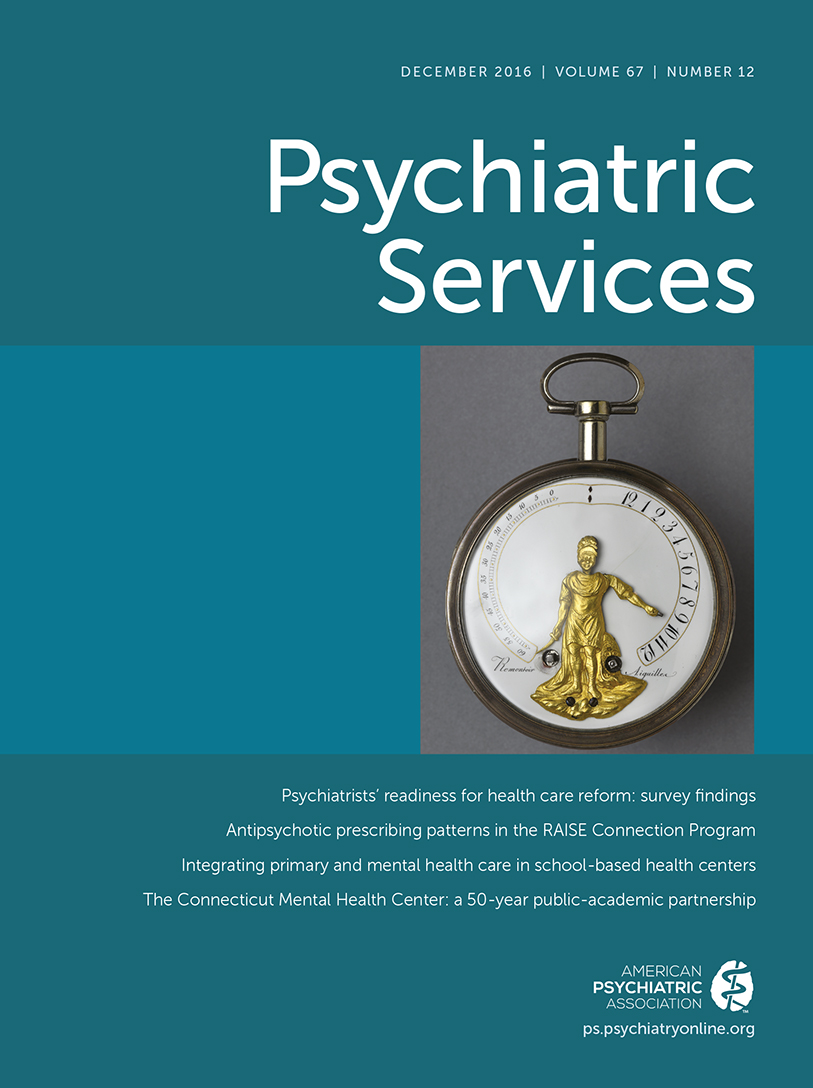Much Has Changed but Much Remains the Same
John Talbott became the editor of Hospital & Community Psychiatry in January 1981 after having led an American Psychiatric Association effort to build support for services for individuals with chronic mental disorders. Dr. Talbott published one of my earliest studies on chronic mental illness as the lead article in his first issue. That article, written while I was at the National Institute of Mental Health, was the product of work I did as a part of a team following up on recommendations of President Carter’s Commission on Mental Health to develop a “National Plan for the Chronically Mentally Ill.” The study focused on defining and counting the population of these individuals. Over the next 23 years of Dr. Talbott’s leadership, services for this population were the major focus of the journal, which came to be known in 1995 as Psychiatric Services.
I began as editor of Psychiatric Services 13 years ago. With this issue I say farewell as my term comes to a close. When I was a resident, I read the journal every month and fantasized that one day I would become an author and a member of the editorial board and then the editor. It was the most important aspiration of my professional career, and I am grateful to have had the opportunity to realize this dream. I am confident that my favorite journal will flourish under the inspired leadership of Lisa Dixon, a friend and colleague, with her commitment to rigor and relevance.
The focus of the journal has changed slowly over the past decade, moving from an almost exclusive dedication to services and supports addressing the needs of people with disabling mental disorders to a broader mission covering the landscape of psychiatric services and behavioral health policy. The change was necessary because the field of mental health services research has changed, reflecting the evolving needs and interests of the public and those of us involved in developing, implementing, providing, funding, and evaluating psychiatric services.
You will see just how the field has evolved if you glance at the table of contents of this issue of Psychiatric Services and look at the variety of articles. That is what Connie Gartner, our retiring managing editor, advised me to do when she recently reminded me of my promise to write this final Taking Issue of 2016. Revel in the variety. Share in the joy that she and I experienced each month as we completed our editorial work. Know, too, how important her contributions have been and how much I have appreciated her dedication to the journal and to our readers and reviewers.
This issue includes an array of interesting articles. Forty years ago—or even a decade ago—it would have been a long-shot hope to imagine that we would now be publishing studies about the impact of legislation such as the Affordable Care Act, in which behavioral health services are considered an “essential health benefit” and coverage is offered at parity with all other health conditions. The specialty area of pharmacological services research has emerged, and almost every issue of the journal has one or more reports on the topic. There are four such articles in the December issue. This issue also includes studies done on inpatient units, in emergency departments, in schools, and in primary care settings. This month we offer reports on public attitudes toward mental illness and on the use of coercive measures. There is research on homelessness and mental illness, first-episode psychosis, and depression. We even have a brief report on the mental health care needs of Asian lesbian and bisexual women. One column describes a long-standing research and services partnership, and another describes a Finnish shared decision-making project adapted for use in Boston. An Open Forum focuses on financial incentives to improve outcomes. One study is focused on psychiatrists and another on social workers. The interdisciplinary boundaries of the journal continue to expand.
Psychiatric Services has changed over the nearly 40 years of my involvement with the journal. The need for rigorous and relevant scholarship, however, remains just as strong as it did four decades ago. Plus ça change, plus c’est la même chose. The more things change, the more they stay the same.
I look forward to the change—and the continuity.



